I had often admired the narrow façade of Palazzo Grimani on my way to Santa Maria Formosa. The sculptures seem to call you and make you turn your head when you pass the small calle.
When I did visit the palazzo, I was very impressed as it’s really worth a visit. Wandering around the rooms, you can easily imagine how it must have been to live there. In this post, I will give you a short introduction to the history of Palazzo Grimani and tell you what you can expect from your visit to the only Renaissance Roman mannerist-inspired house in Venice.
History of Palazzo Grimani
The original medieval building was built along the canals of San Severo, where you can find the water entrance, and Santa Maria Formosa. The land entrance, where you start your visit, is in the Ramo Grimani, a small side street in the Ruga Giuffa. It was acquired as a family residence by Antonio Grimani, who became a doge in 1521 (see my post ‘A short introduction to the complicated history of Venice’). Later, he donated it to his grandsons Vettore Grimani, Procurator de Supra for the Republic of Venice, and Giovanni Grimani, Patriarch of Aquileia. In 1558, when Vettorie died, Giovanni became the sole owner. The palazzo remained in the hands of the Santa Maria Formosa branch of the Grimani family until 1865. The deteriorated building became a state property in 1981. After a thorough restoration, it opened as a museum in 2008.
Originally, the house was L-shaped. In the 16th century, two new wings were added which doubled the size and created the inner courtyard. The goal was to create a Roman residence, which can be seen from the courtyard with loggias of marble colonnades. This was the first place to give the visitors a glimpse of their classical statues’ collection. To give the palazzo a classical feeling, Vettore and Giovanni decorated it with frescos and stucco work. They never used Venetian artists, but hired Mannerist artists from Rome and Central Italy, such as Giovanni da Udine, Francesco Salviati, Camillo Mantovano, Francesco Menzocchi and Federico Zuccari. Hence, the palazzo combines Tuscan and Roman elements. It was the first time white stucco work and mannerist frescoes were used in Venice.
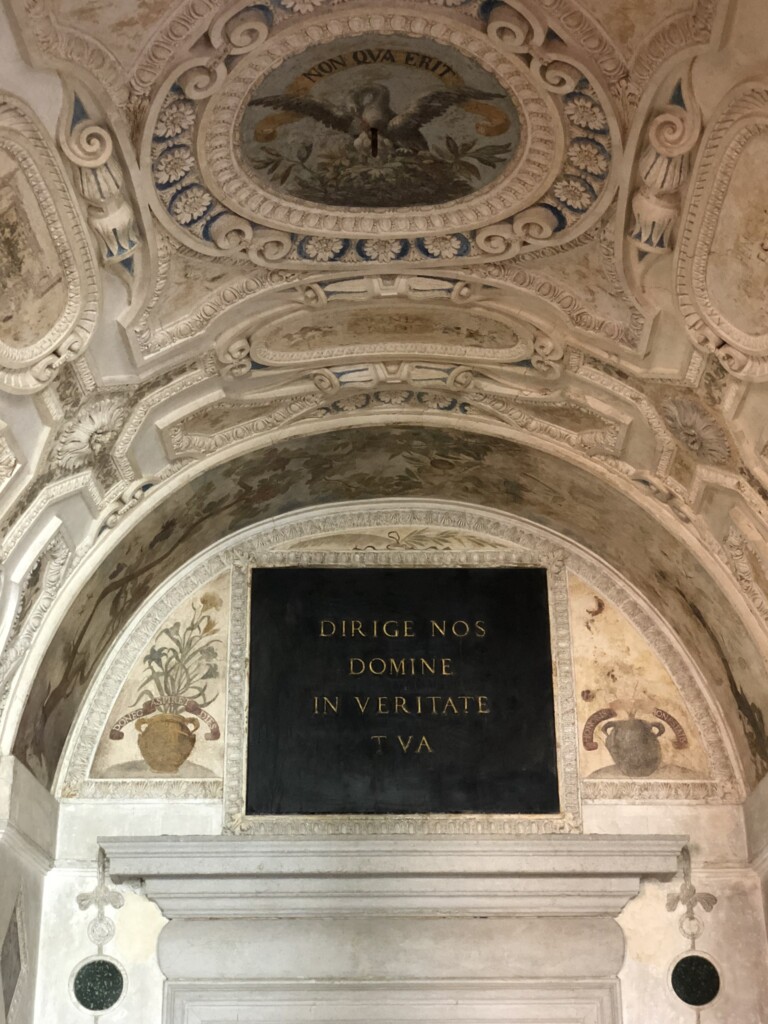
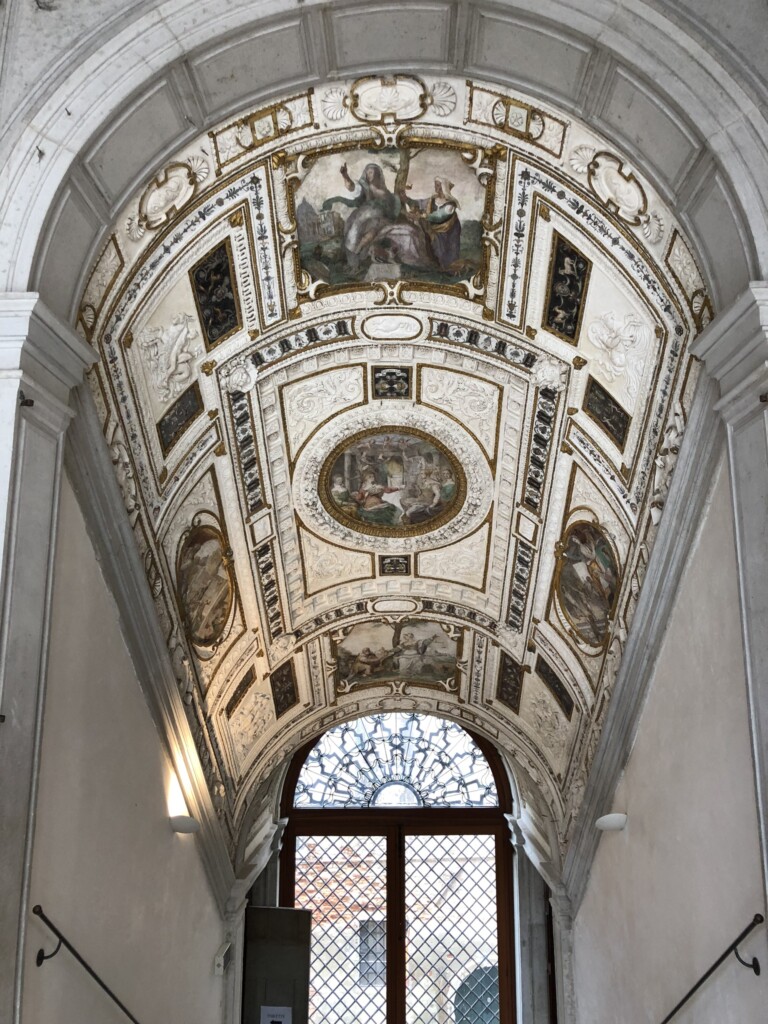
A unique palazzo with an extraordinary collection
As soon as you walk up the beautifully decorated stairs, you are confronted with the grandeur of the palazzo. The stuccos and painted figures on the ceiling are from Federico Zuccari. You will notice religious allegories, floral arabesques and mythological sea creatures. Some of the stuccos are based on ancient cameos and gems owned by the family. When you reach the portego (the main room) on the first floor, you are greeted by the portraits of Marco, Ottaviano and Vincenzo Grimani, painted by Tintoretto.
Take a right to start your tour of the palazzo. You can circle the entire first floor which spirals around the inner courtyard. The first room which I liked a lot is the Foliage room. It is decorated with lush motifs of plants and birds. The Latin mottoes refer to the struggles of Giovanni Grimani with the church authorities. The design is from Camillo Mantovano. He also painted the ceiling with fish and birds in the dining room.
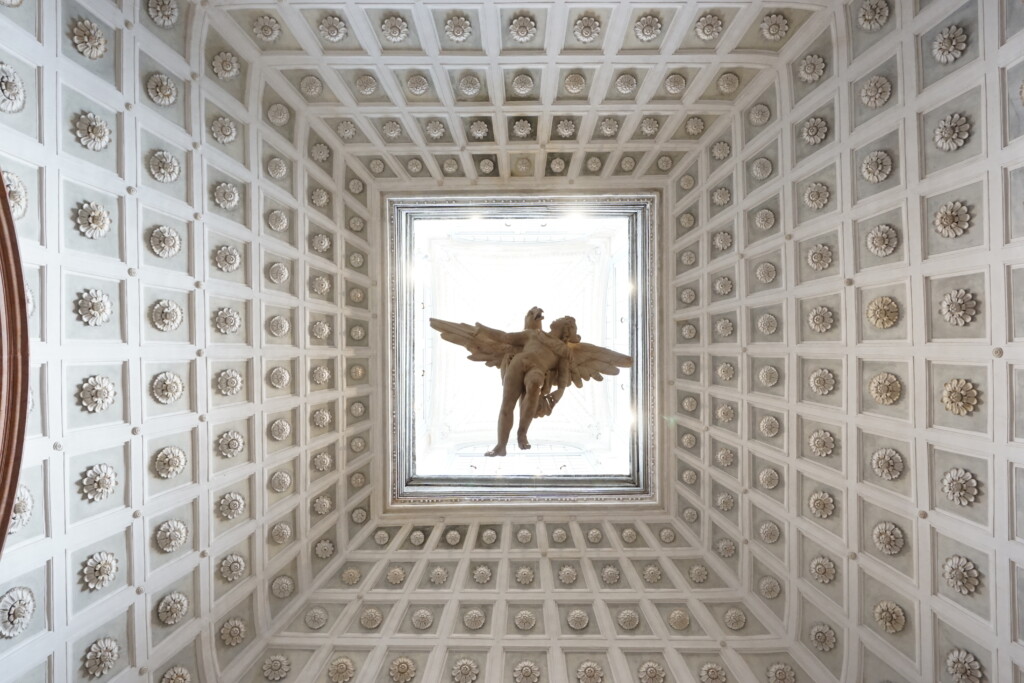
In the corner, you will find the Tribuna, the most impressive part of your visit. It was designed by Giovanni Grimani himself to display 130 sculptures, including Greek and Roman works, of his vast collection. Inspired by the Pantheon in Rome, the only light comes from the top. When Giovanni Grimani died in 1594, he donated these sculptures to La Serenissima. Several of these have been on display at the Marciana Library and the National Archaelogoical Museum of Venice. At Palazzo Grimani, you could then only admire the impressive ‘Abduction of Ganymede’ statue, hanging from the top of the vaulted ceiling. In 2019, the majority of the original sculptures (approx. 100 pieces) returned to Palazzo Grimani. The sculptures are put in the niches and on shelves at different heights, as it was intended by Giovanni Grimani. It’s an overwhelming experience and you can spend quite some time admiring each one individually. It’s almost a museum in itself. If you want to admire this from home, you can watch the beautiful virtual reality tour on their website.
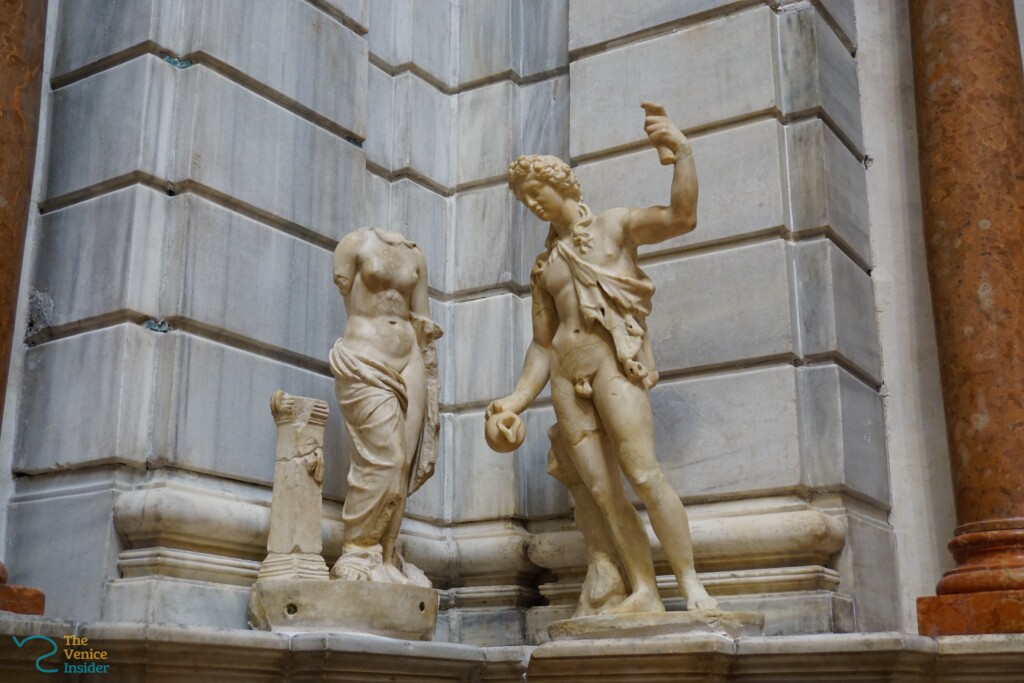
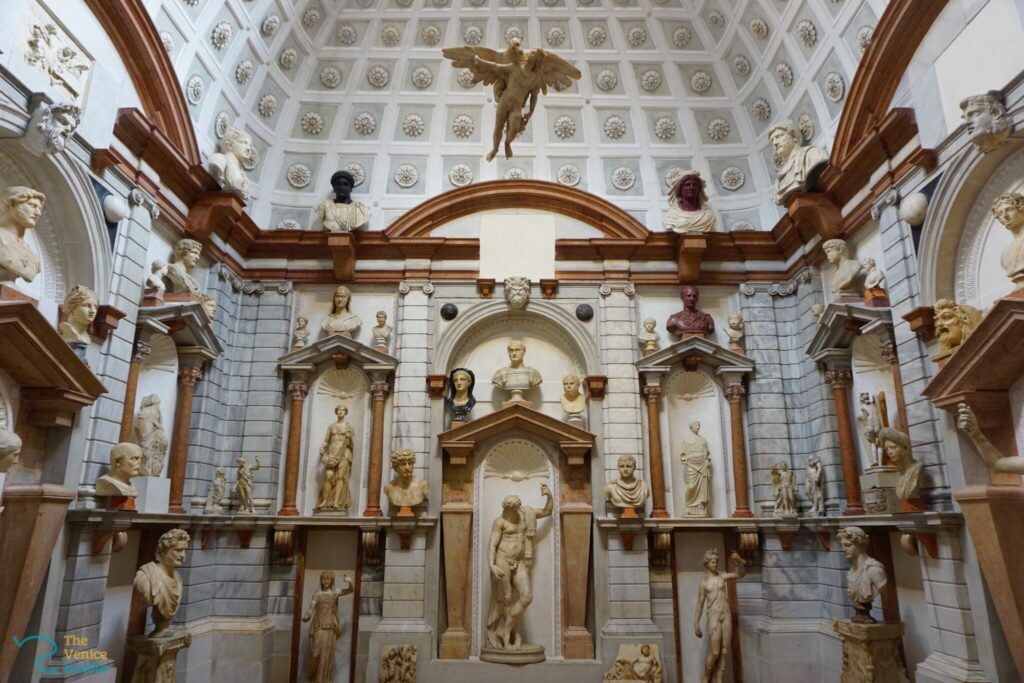
When you continue your visit of the Palazzo, don’t forget to take a look at the Bosch room. Being into contemporary art, the Grimani family didn’t limit their collection to Venetian, or Italian, artists. They also owned works of, for instance, Hans Memling and Hieronymus Bosch. The ‘Vision of the Other World’ is one of the most famous paintings of Bosch.
Every room is magnificent and tells its own story. When you visit the palazzo, make sure you read the signs at the entrance of each room. They will give you all the information you need to put everything in the right context.
The palazzo also often hosts exhibitions in parallel with the Art Biennale, such as ‘The arch within the arc’ of Rick Lowe in 2024.
If you want to know more about Palazzo Grimani and the sculptures, you can order the catalogue of the exhibition ‘Domus Grimani: The Collection of Classical Sculptures Reassembled in Its Original Setting after 400 Years’.
Enjoy your visit!
